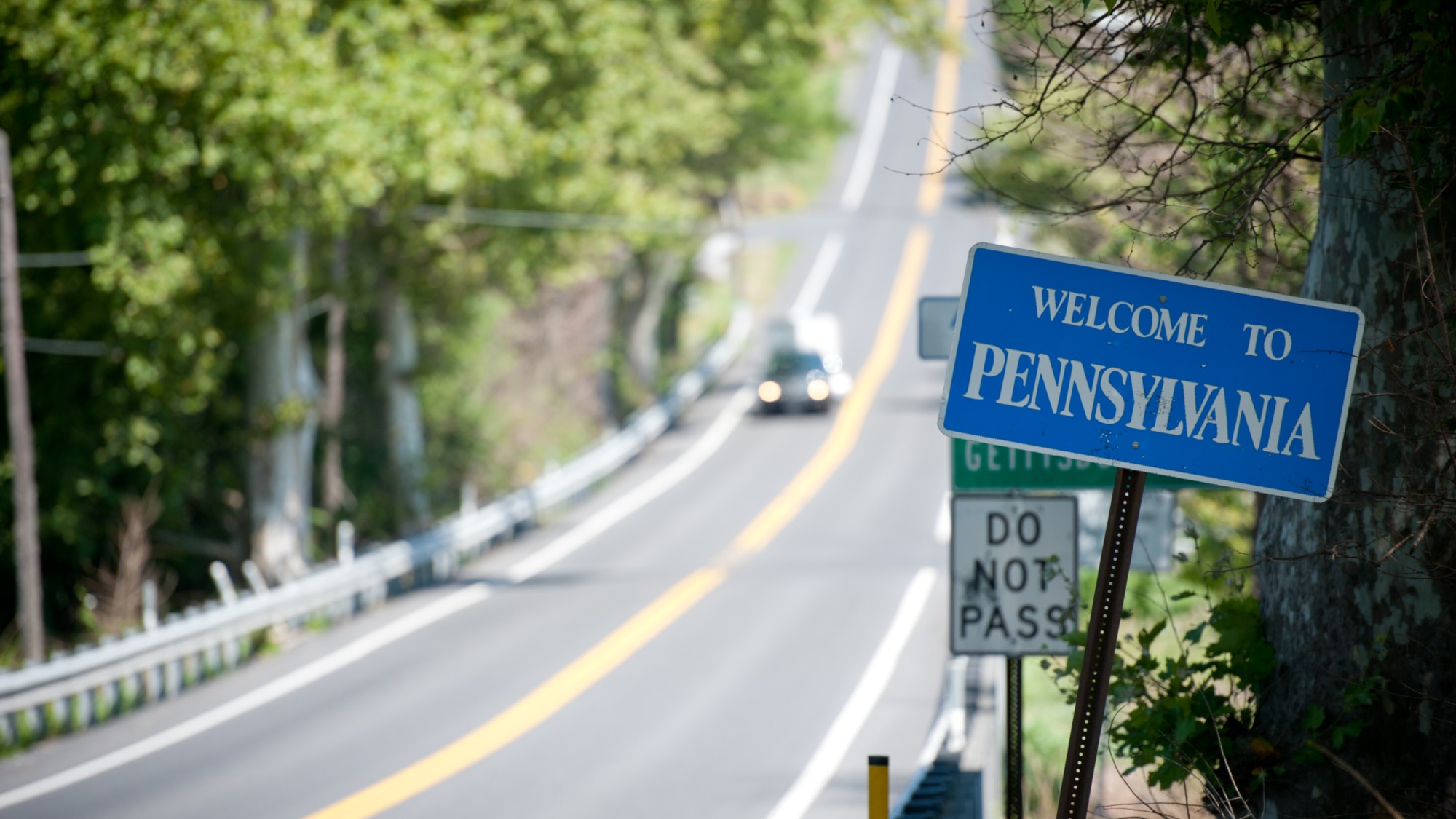The last word: This is your brain on GPS
Our navigational gadgets, says journalist Alex Hutchinson, could actually be damaging our sense of direction.
WHEN ALISON KENDALL’S boss told her in 2007 that her civil service job was being transferred to a different building in another part of Vancouver, she panicked. Commuting to a new office would be no big deal for most people, she knew. But Kendall might well have the worst sense of direction in the world. For as long as she can remember, she has been unable to perform even the simplest navigational tasks. She needed a family member to escort her to and from school right through the end of grade 12, and is still able to produce only a highly distorted, detail-free sketch map of her own house. After five years of careful training, she had mastered the bus trip to and from her office, but the slightest deviation left her hopelessly lost. When that happened, the 43-year-old had to phone her father to pick her up, even if she was just a few blocks from home, in the neighborhood where she had lived most of her life.
Kendall (not her real name) decided to ask a neuropsychologist if she had medical grounds for turning down the transfer. He referred her to a clinic where Giuseppe Iaria, a young postdoctoral student from Italy, was studying the neuroscience of orientation and navigation. After a battery of tests, Iaria concluded that Kendall was perfectly normal neurologically. She had average intelligence, memory, and mental imaging abilities. She was simply unable to form a “cognitive map,” the mind’s way of representing spatial relationships. When he put her in a brain scanner and asked her to explore the streets of a computer-generated virtual town, her hippocampus—the brain region responsible for cognitive maps—remained inactive, even though basic memory tests had shown that it was functional. Earlier this year, a paper by neuro-ophthalmologist Jason Barton, Iaria, and two colleagues appeared in the journal Neuropsychologia, describing a new disorder called “developmental topographical disorientation,” or DTD. Kendall was “Patient 1.”
Like any other human trait, navigational skill varies widely—some people crow about their abilities, while others lament their ineptitude. So in a way, Kendall’s condition came as no surprise. (“I was expecting to find someone like that eventually,” Iaria says.) But as we stand on the cusp of the age of the global positioning system, which is well on its way to being a standard feature in every car and on every cell phone, neuroscientists are picking up some worrying signs about the changes that will occur as we grow accustomed to the brain-free navigation. Once we lose the habit of forming cognitive maps, we may find ourselves becoming more and more like Patient 1. More troubling, the experts are learning that the brain’s navigational system is a two-way street: Yes, our brains determine how we navigate, but our navigational efforts also shape our brains.
The Week
Escape your echo chamber. Get the facts behind the news, plus analysis from multiple perspectives.

Sign up for The Week's Free Newsletters
From our morning news briefing to a weekly Good News Newsletter, get the best of The Week delivered directly to your inbox.
From our morning news briefing to a weekly Good News Newsletter, get the best of The Week delivered directly to your inbox.
It was the flower shop that messed me up. I was navigating through the virtual town Iaria had built within a video game platform, trying to learn the locations of four landmarks: a Wendy’s, a Days Inn, a flower shop, and a movie theater showing Hugh Grant’s Love Actually. It took me three tries to place all of them in the correct positions on a map; typical scores range from two to five. “You’re average,” Iaria said cheerfully, crushing my hopes of being a super-outlier.
Iaria and McGill University researcher Véronique Bohbot demonstrated in a study they published six years ago that our mapping strategies fall into two basic categories. One is a spatial strategy that involves learning the relationships between various landmarks—creating a map in your head, in other words, that shows where the flower shop is in relationship to the movie theater and to the Wendy’s. The other is a stimulus-response approach that encodes specific routes by memorizing a series of cues, as in: Get off the bus when you see the glass skyscraper, then walk toward the big park. For their study, Iaria and Bohbot created a virtual maze that tested both methods; they found that about half of us prefer spatial strategies, while the other half prefer stimulus-response.
Most of us can use both, but we have a bias toward one or the other. Stimulus-response navigators tend to complete the task more quickly and make fewer errors. The spatial approach does have one major advantage, though: versatility. If I memorize the routes from the flower shop to the movie theater, and from the movie theater to the Wendy’s, I can whip back and forth along those routes very quickly. But what if I want to go from the flower shop straight to the Wendy’s? Without a cognitive map, I have no way of devising a new route.
An amazing series of experiments conducted on rats in the 1970s suggests that cognitive maps are more than metaphorical. Certain neurons in the hippocampus, called “place cells,” were observed activating only when the rat was in a specific place. Let the animal wander through a maze, and you could watch a chain of neurons fire in a spatial pattern that exactly matched its path, at a smaller scale.
A free daily email with the biggest news stories of the day – and the best features from TheWeek.com
Whether the same types of patterns are enacted in the human brain remains a matter of debate, because researchers aren’t allowed to implant arrays of electrodes in our brains. We do know, though, that the human hippocampus stores the same kind of information as the rat hippocampus does, thanks in part to a remarkable series of experiments on a group of truly gifted navigators.
For those of us who have grown up in the reassuring embrace of grid-patterned streets that run straight and don’t change names every two blocks, Old World cities like London—recently declared the most confusing city in the world by a 12,500-person Nokia Maps survey—present huge challenges. So pity London’s cabbies. Before getting behind the wheel of a black cab, would-be drivers have to pass a test called the Knowledge, which requires them to memorize some 25,000 streets and thousands of landmarks, a task that takes two to four years.
A cognitive map featuring that level of detail, as you might imagine, requires a fair amount of storage space, and, sure enough, University College London neuroscientist Eleanor Maguire found that the back part of the hippocampus in London taxi drivers is enlarged compared with that of the general population. The longer they’ve been driving, the bigger the gap. Maguire also found, though, that the front part of the hippocampus gets correspondingly smaller. “So there is a price to pay for their expertise,” she says.
If a few years in a taxi can produce noticeable differences in the organization of the brain, imagine what a lifetime of roaming the featureless Arctic or sailing between remote Polynesian islands would do. And what does that tell us about someone like Alison Kendall? If the structure of the brain is so easily shaped by the demands we place on it, determining whether Kendall has a genuine disorder, or simply lies at the extreme edge of a normal range of navigational skill, is not straightforward. “If you hear her story, you think, That’s really out there,” says Jason Barton. “But there’s variation in every human ability, and this, I’m sure, is one of them.”
IN JUNE, AL Byrd’s three-bedroom home, built by his father on the western outskirts of Atlanta, was mistakenly torn down by a demolition company. “I said, ‘Don’t you have an address?’” a distraught Byrd later recounted. “He said, ‘Yes, my GPS coordinates led me right to this address here.’” The incident joined a long list of satellite-guided blunders, including one last year in which a driver in Bedford Hills, N.Y., obeyed instructions from his GPS to turn right onto a set of train tracks, where he got stuck and had to abandon his car to a collision with a commuter train. Incredibly, the same thing happened to someone else at exactly the same intersection nine months later. In Britain, an insurance company survey found that 300,000 drivers have either crashed or nearly crashed because of GPS systems.
The increase in GPS use also has meant that people spend less time learning details about where they are at any moment. British researchers have found that drivers using GPS formed less detailed and accurate cognitive maps of their routes than drivers who use paper maps. Similarly, a University of Tokyo study found that pedestrians using GPS-enabled cell phones had a harder time figuring out where they were and where they had come from. Their navigational aids had allowed them to turn off their hippocampi.
To many, the beauty of GPS devices is precisely that we no longer have any need to assemble cognitive maps. But Cornell University researcher Gilly Leshed argues that knowledge of an area means more than just finding your way around. Navigation underlies the transformation of an abstract “space” to a “place” that has meaning and value to an individual. For the GPS users Leshed and her colleagues have observed, the virtual world on the screens of their devices seemed to take over from the real world that whizzed by outside. “Instead of experiencing physical locations, you end up with a more abstract representation of the world,” she says.
Bohbot has more concrete worries. She fears that overreliance on GPS will result in our using the spatial capabilities of the hippocampus less, and that it will in turn get smaller. Other studies have tied atrophy of the hippocampus to increased risk of dementia.
Of course, we still don’t use GPS to navigate the local environments where we spend most of our time—our homes, our offices, our immediate neighborhoods—so a change in brain structure is perhaps unlikely. And we also use the hippocampus to store autobiographical memories and to imagine the future. But Bohbot sees the decline in spatial thinking as part of a broader shift toward stimulus-response, reward-linked behavior. “Society is geared in many ways toward shrinking the hippocampus,” she says. “In the next 20 years, I think we’re going to see dementia occurring earlier and earlier.”
This was the point at which I started feeling guilty for giving my parents a GPS system for Christmas last year.
BUT THERE IS hope. Alison Kendall was able, after six weeks of working with Giuseppe Iaria for an hour a week, to shorten the time she needed to form a cognitive map in a simple virtual environment from 32 minutes to five. Her success offered further evidence that her inability to form cognitive maps isn’t the result of hidden brain damage. She can do it; she’s just very bad at it. One day, we all may have to develop routines to exercise our underworked hippocampi just as we use health clubs to exercise our underworked bodies.
Iaria hopes that our growing attachment to GPS devices doesn’t lead to that. “It’s an amazing tool, and I’m so grateful we have this kind of technology for people that need it,” he says. “At the same time, I don’t think it’s a tool that we want to use every day for fun. Because then you don’t think about your environment. You don’t look at it. You don’t care about it.”
Iaria, after years of studying the vagaries of human navigation, has become a good man to have at your side on a trip to points unknown. When he encounters new places, he knows which features to seek out to get oriented. He’ll find the tallest building or landmark, and remember what it looks like from different perspectives. And he can give people good directions in whatever navigational language they happen to speak, whether by referring to landmarks, compass directions, distances, or street names.
But that doesn’t mean finding his bearings is an obsession. “You know, I lived in Paris, and to me one of the most beautiful things was just getting lost sometimes in these very small streets, and having a coffee and a cigarette with strangers, and going back trying to find your way,” he says. “These days, there are very few moments you actually have the freedom to get lost.”
From a story that appears in the current issue of The Walrus. Used with permission of the author.
-
 3 ways to reduce the cost of owning a car
3 ways to reduce the cost of owning a carthe explainer Despite the rising expense of auto insurance premiums and repairs, there are ways to save
-
 DOJ targets ‘disparate impact’ avenues of discrimination protections
DOJ targets ‘disparate impact’ avenues of discrimination protectionsIN THE SPOTLIGHT By focusing solely on ‘intentional discrimination,’ the Justice Department risks allowing more subtle forms of bias to proliferate
-
 ‘Consistency at the ballot box isn’t nearly as meaningful to many voters here’
‘Consistency at the ballot box isn’t nearly as meaningful to many voters here’Instant Opinion Opinion, comment and editorials of the day